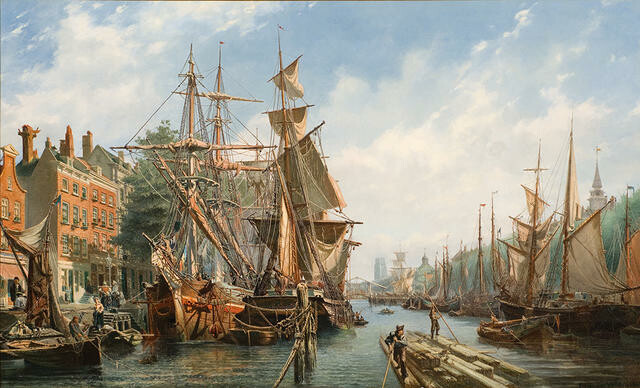B.
The Valley of Darkness
Behind the scenes
In preparation for the Gallery's forthcoming exhibition and publication, Gallery photographer John Collie is busily photographing Petrus Van der Velden works.
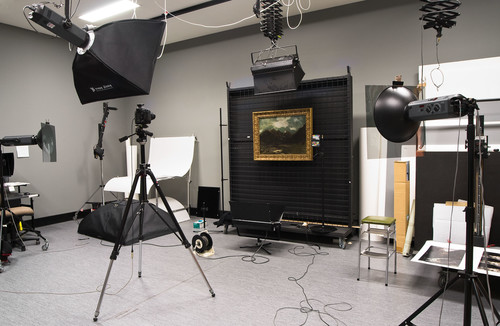
The studio setup, with Van der Velden's West Coast Ranges (1893) on the easel. Photo: John Collie
John is photographing the works digitally and on film, with and without frames and under various lighting conditions. The results are then scrutinised to find the best images. From what I've seen so far they're going to look great on the page.
How do you capture the experience of standing in front of a painting in a photograph? The surface and texture of a work of art are often an integral part of the experience – the way the light reflects off heavy impasto brushstrokes, the depth suggested by the shapes of the layers of underpainting. But these can be tricky to catch in a photograph, and often they just don't ‘feel' right. Van der Velden's series of works depicting the Otira Valley are just such a challenge. Dark and turbulent, they contain oily dark areas of rich texture – often achieved by mixing bitumen in with the paints.
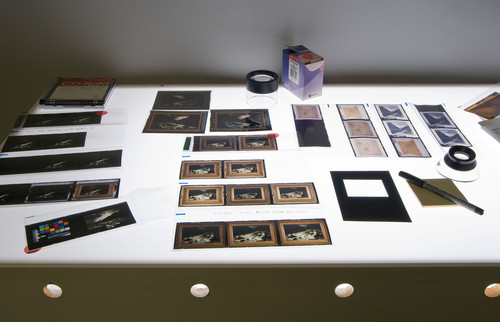
Checking the transparencies. Photo: John Collie
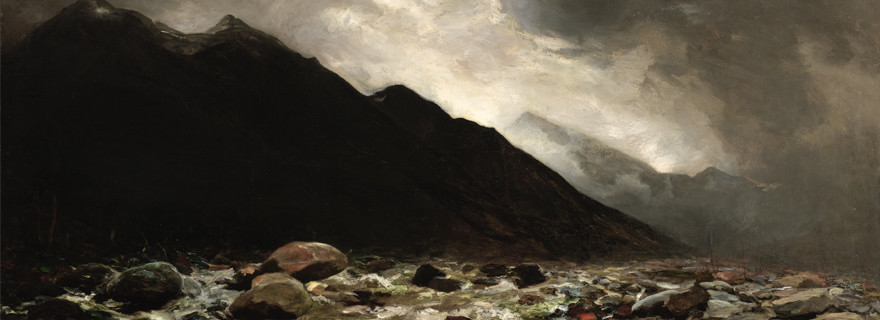
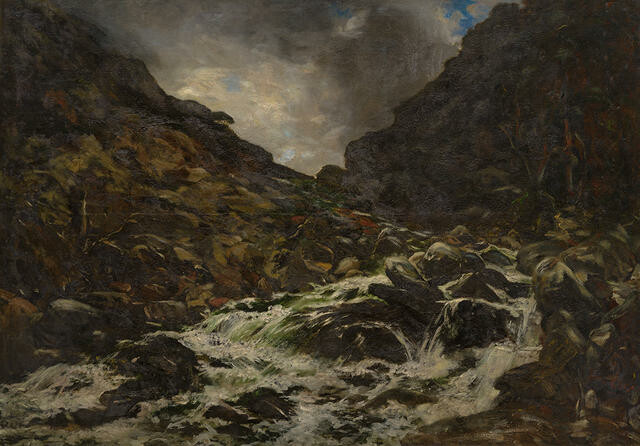
![Burial in the Winter on the Island of Marken [The Dutch Funeral]](/media/cache/58/29/58295f2c69a43061863860a247424aba.jpg)
